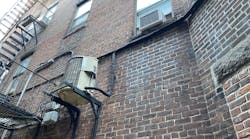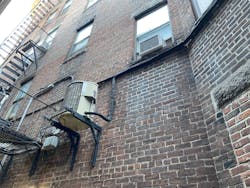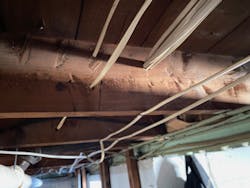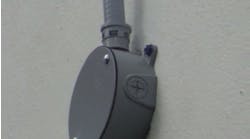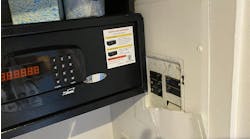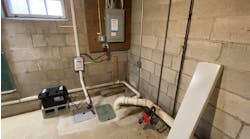All references are based on the 2023 edition of the NEC.
Alley Whoops!
I spotted this installation while walking through an alleyway on a recent visit to a big city near me. The air conditioning unit sitting on the brackets made of strut (below the windows) has no disconnecting means anywhere within sight. Section 440.14 requires a disconnecting means to be located within sight from — and readily accessible from — the air-conditioning or refrigeration equipment. Exception 1 allows the disconnecting means to be located remote from the air-conditioning or refrigeration equipment if the equipment is essential to an industrial process at a facility with written safety procedures and qualified people if the disconnect is lockable in accordance with Sec. 110.25. This is a residential building, so Exception 1 is not applicable. The power for this unit is being supplied by what appears to be a UF cable secured to the refrigerant lines with cable ties. Section 225.21 refers installers to the requirements in Sec. 230.51 when installing multiconductor cables on the surfaces of buildings or structures. There does not appear to be any Code sections that specifically prohibit installing and supporting UF cables in this manner. However, Sec. 340.12(9) prohibits installing UF in direct sunlight unless the cable is identified as being sunlight resistant.
Basement Blunder
These NM cables are installed in the unfinished basement of a single-family home. Running cables smaller than two 6 AWG or three 8 AWG perpendicularly to the joists and securing the cables directly to the underside of the joists is a violation of Sec. 334.15(C). These smaller NM cables must be either run through holes bored through the joists, or they must be installed on running boards. Where cables are run through bored holes, Sec. 300.4(A)(1) requires the holes to be bored so the edge of the hole is no closer than 11/4 in. from the edges of the wood member. If this distance cannot be maintained, protective steel plates must be installed to provide protection against penetration form nails or screws. That does not appear to be a concern here. However, installers must be aware that building codes may have additional requirements about where holes may be drilled and what size holes may be drilled in various wooden framing members. For example, holes may not be permitted to be drilled in the middle one-third of the span of a floor joist or closer than 2 in. to the edge of the joist. The holes drilled through these joists may or may not comply with your locally adopted building code.
